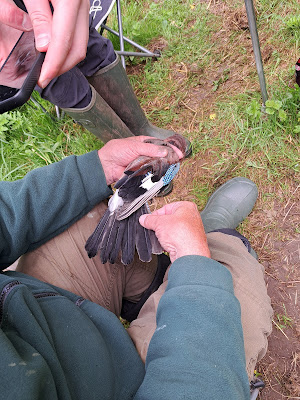This morning, we made our final visit of the year to check on and ring the Common Tern chicks
on the floating platform at Attenborough Nature Reserve. On our previous visit, there were a
number of eggs still to hatch, and today we were able to ring 12 chicks and retrap 1 chick that
was very small on the last visit.
We had also intended to check on the Oystercatcher chick, but the engine of the boat gave out
so we had to row back. The Oystercatcher will now be monitored from the shore and we hope
that it’s still being provisioned by its parents until it’s big enough to fledge.
Following our workout, we ringed 3 Sand Martin chicks at the artificial sand bank. It seems that
only one pair decided to try for a second brood.
Holly




























